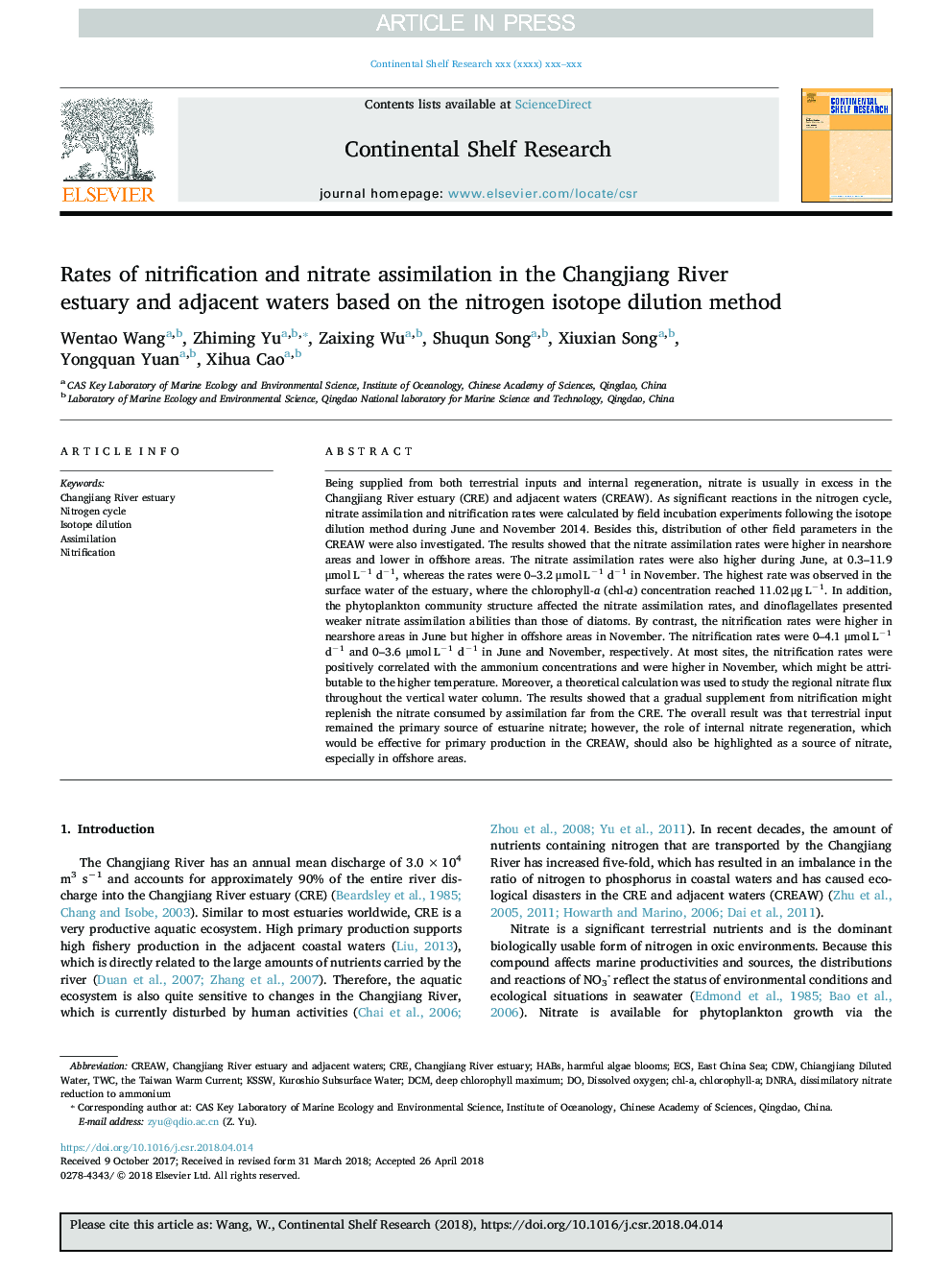| Article ID | Journal | Published Year | Pages | File Type |
|---|---|---|---|---|
| 8884029 | Continental Shelf Research | 2018 | 9 Pages |
Abstract
Being supplied from both terrestrial inputs and internal regeneration, nitrate is usually in excess in the Changjiang River estuary (CRE) and adjacent waters (CREAW). As significant reactions in the nitrogen cycle, nitrate assimilation and nitrification rates were calculated by field incubation experiments following the isotope dilution method during June and November 2014. Besides this, distribution of other field parameters in the CREAW were also investigated. The results showed that the nitrate assimilation rates were higher in nearshore areas and lower in offshore areas. The nitrate assimilation rates were also higher during June, at 0.3-11.9 μmolâ¯Lâ1 dâ1, whereas the rates were 0-3.2 μmolâ¯Lâ1 dâ1 in November. The highest rate was observed in the surface water of the estuary, where the chlorophyll-a (chl-a) concentration reached 11.02â¯Î¼gâ¯Lâ1. In addition, the phytoplankton community structure affected the nitrate assimilation rates, and dinoflagellates presented weaker nitrate assimilation abilities than those of diatoms. By contrast, the nitrification rates were higher in nearshore areas in June but higher in offshore areas in November. The nitrification rates were 0-4.1 μmolâ¯Lâ1 dâ1 and 0-3.6 μmolâ¯Lâ1 dâ1 in June and November, respectively. At most sites, the nitrification rates were positively correlated with the ammonium concentrations and were higher in November, which might be attributable to the higher temperature. Moreover, a theoretical calculation was used to study the regional nitrate flux throughout the vertical water column. The results showed that a gradual supplement from nitrification might replenish the nitrate consumed by assimilation far from the CRE. The overall result was that terrestrial input remained the primary source of estuarine nitrate; however, the role of internal nitrate regeneration, which would be effective for primary production in the CREAW, should also be highlighted as a source of nitrate, especially in offshore areas.
Keywords
Related Topics
Physical Sciences and Engineering
Earth and Planetary Sciences
Geology
Authors
Wentao Wang, Zhiming Yu, Zaixing Wu, Shuqun Song, Xiuxian Song, Yongquan Yuan, Xihua Cao,
